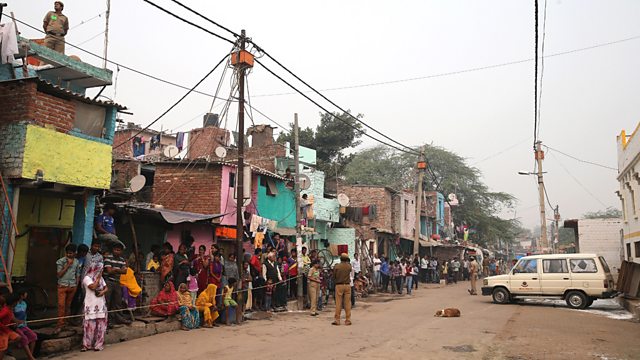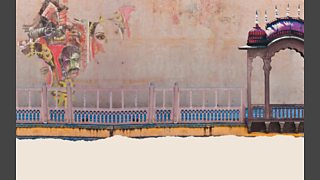
Govindpuri Sound
What is it about the sounds in the slums of Govindpuri, that makes them special and unique?
Slum settlements have a strong visual identity. We are used to seeing TV footage of densely packed, ramshackle homes squeezed onto strips of land in inner cities. Dr Tom Rice – a sound anthropologist – takes an alternative perspective and explores what a slum sounds like and how this embodies and reflects the local culture. Tom meets up with Dr Tripta Chandola, an urban researcher, who for 10 years has studied the slums of Govindpuri in India’s capital, Delhi.
Tripta introduces Tom to the settlement and some of its residents to discover what is unique about Govindpuri sound. He listens to the slum through their ears as they explain how music, sound and noise are part of the fabric of their daily social and emotional lives. Residents describe sonic features of the slum such as the early morning rush for water, which is a limited and precious resource in the settlement. Sounds travel easily through the narrow built up lanes and the density of the population means both sounds and listening ears are everywhere. The rich and varied soundscape can create an exciting buzz of activity and warm sociability.
However, Tom also learns how certain sounds can be a source of friction that emphasise sharp social divisions across the boundaries of religion, class and gender. Govindpuri does not exist in a vacuum, and Tom explores the links between the sounds of the slums and the wider soundscape of Delhi. A growing threat to the slums could also mean that its vibrant sonic culture may soon be silenced forever.
(Photo: General street view of Govindpuri slum district, in Delhi. Credit: Chris Jackson/Getty Images)
Last on
More episodes
Next
Broadcasts
- Sun 1 Feb 2015 20:05GMT���˿��� World Service Online
- Wed 4 Feb 2015 09:05GMT���˿��� World Service Online
Featured in...
![]()
India Archive
Culture, society and politics - archive features on India

